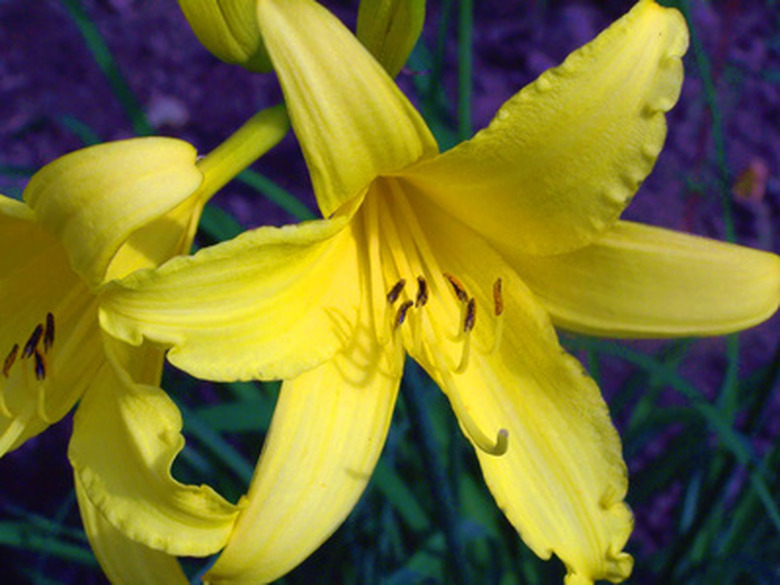Flowers For Southern Exposure
Southern exposures feature direct sunlight for most of the day. This intense exposure creates a microclimate that requires gardeners to select flowers tolerant of the heat associated with direct sun. These full-sun locations often feature very few wind blocks. Flowers for southern exposures need to be tough. Provide plenty of water and organic material in the soil to help these plants thrive in a harsh environment.
Daylily
The daylily offers a tough perennial plant for the southern exposure site. This plant prefers full-sun exposure to produce trumpet-shaped blooms in early summer. Daylilies grow in a mounded form of thin foliage blades that arches outward like an umbrella. Flowers form on tall reed-like stems that shoot upward from the foliage mound. Daylilies come in a variety of colors ranging from the basic orange and yellow cultivars to intricate reds and deep purple. Despite the daylily's tolerance to poor soils, add organic material to improve plant health and flower production. Daylilies spread readily to fill a difficult planting site within a few years. This plant looks beautiful when different cultivars in the same southern garden. Plant daylilies in USDA Hardiness Zones 3 to 10.
- Southern exposures feature direct sunlight for most of the day.
- Despite the daylily's tolerance to poor soils, add organic material to improve plant health and flower production.
Blanket Flower
This plant resembles a daisy in growth habit and flower shape. It produces multicolored red, orange and yellow flowers. Flowers exhibit a banding pattern on the petals with red centers and yellow edges. Blanket flower spreads readily and grows best in the full sun location. This plant won't tolerate soggy soils. Plant it in USDA Hardiness Zones 2 to 10 in southern exposures to benefit from the long blooming period of the blanket flower. Prune spent flowers to encourage further blooming. Blanket flower reaches up to 24 inches at maturity.
- This plant resembles a daisy in growth habit and flower shape.
Zinnia
The annual zinnia produces strong foliage, stems and flowers in a southern exposure. Zinnia produces a tightly woven flower featuring multiple layers of petals. Typical flower colors include white, purple, pink, orange and yellow. Plant zinnias with plenty of organic material in a location that features excellent drainage. Mature plants reach height of 6 to 36 inches, depending on the cultivar. This plant produces abundant blooms with regular pruning of spent flowers. Keep zinnia soil moist but not soggy to promote good blooming.
- The annual zinnia produces strong foliage, stems and flowers in a southern exposure.
